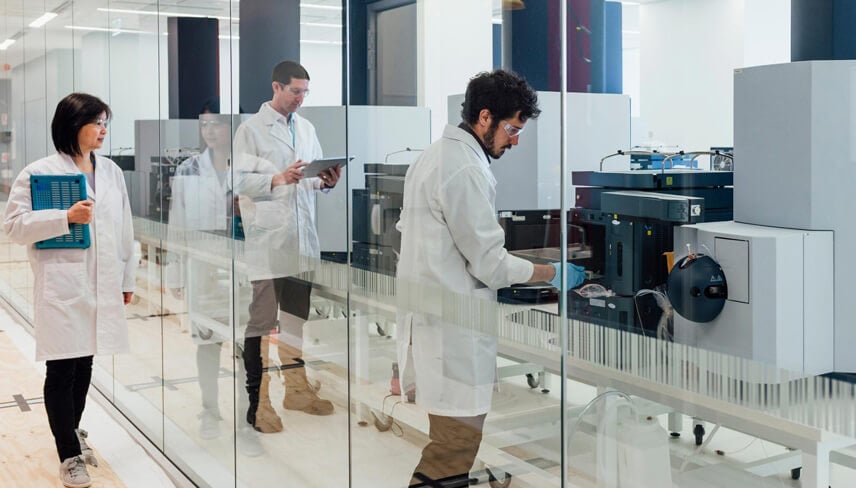Understanding Regulatory Frameworks for Single-Use Systems: USP <665>, USP <1665>, and BPOG Extractables Guidance in Biopharmaceutical Manufacturing

04 Jun 2025
What pharma and biopharma manufacturers need to know – and do – before the 2026 deadline.
Regulatory Landscape for Single-Use Systems
The updated drafts of the United States Pharmacopoeia (USP) <665> chapter and <1665> guidance for single-use technology (SUT) cover plastic components and systems used to manufacture pharmaceutical and biopharmaceutical drug substances and products.
Both USP <665> and <1665> chapters were officially approved in 2024. The USP General Chapters–Packaging and Distribution Expert Committee has extended the official effective date to May 1, 2026. Even though it’s some months away still, it’s recommended to start preparing now to ensure compliance and avoid delays.
Chapter USP <1665> contains guidance on risk assessment for materials and formulations, including active pharmaceutical ingredients, drug products, biologics, single-use systems and multi-use systems. It provides guidance on implementing a review of all polymeric materials of construction for each component and system, utilizing a two-step approach consisting of an initial assessment followed by a risk assessment for the application of interest. The initial assessment determines whether a plastic component is suitable for the intended use and whether testing is required, along with evaluating whether there is significant contact between the plastic component and a process stream. If the component does not come into contact with the process stream under usual production practices, then no further characterisation is required.
Other Key Guidance: BPOG Extractables Analytical Study Design and Technologies
The BioPhorum Operations Group is a group of 90 manufacturers and suppliers of single-use equipment and their goal is to align to a harmonized extractables testing standard for all process contact materials. BPOG has published two key guidance documents to help control potential risks associated with leachable impurities released by single-use components:
- Best Practices Guide for Evaluating Leachables Risk from Polymeric Single-Use Systems Used in Biopharmaceutical Manufacturing
- Standardized Extractables Testing Protocol for Single-Use Systems in Biomanufacturing
These have been widely used by bioprocessing and biopharmaceutical supply companies as best practice for SUS component extractables and leachables testing although BPOG guidance is not official monographs or agency-driven guidelines.
Comparison: USP vs BPOG
USP <665> and the BPOG guidance both have risk management frameworks of E&L for manufacturing processes and use similar approaches. The USP <665> and the BPOG extractables protocols are both used to evaluate extractables, however the USP <665> can be considered a general guideline for the (bio)pharma industry, whereas the BPOG has been developed by the biopharma industry stakeholders. Whilst the BPOG protocol / BioPhorum guidance references relevant USP chapters and is viewed as best practice by many industry parties, these are not formal regulatory documents.
In both, the test protocols are largely aligned, however the number of replicates and timepoints are different, resulting in larger data sets generated when using the BPOG. Each guidance cites the same extraction solvents, whilst water at natural pH is included under BPOG. The BPOG specifies a general reporting threshold of 0.1 μg/cm2, for a given surface area to volume ratio, whereas the USP aligns to a justified AET and refers to principles of USP 1663 / 1664.
Note, that whilst the BPOG protocol / BioPhorum guidance references relevant USP chapters and is viewed as best practice by many industry stakeholders, these are not formal regulatory documents.
Steps to prepare
Evaluation and test programs can be demanding so it makes sense to plan now for outsourcing necessary testing work – it is likely that test houses will be experiencing a growing demand for extractables and leaching packages to meet the requirements of the new USP <665>.
Manufacturers who have not yet performed testing on their single-use systems will need to understand the requirements of the revised USP <665> and partner with a testing provider now and plan for suitable budget and timelines. If testing has been performed in-house, then it recommended to review which methods were used to generate data and it is likely that testing may need to be repeated to ensure compliance with USP <665>. Those who tested based on the BioPharma Operations Group (BPOG) guidelines will need to ensure compliance with the new USP <665> requirements.
Remember, as the landscape evolves, staying informed about regulatory updates and industry best practices is crucial for successful biopharmaceutical manufacturing.
Whether you need guidance, evaluation or examples to illustrate our expertise, we're ready to help. Find out more, and feel free to get in touch!
Dive deeper – Download our white paper on Risk-Based E&L Strategies for Bioprocessing Single-Use Systems now to get the knowledge you need to ensure the safety and quality of your biopharmaceutical products in the era of single-use technology.
Disclaimer: This article provides an overview and should not be considered formal regulatory advice.
